People have since held a notion that maggots pop out of nowhere. So there must have been a point when even you wondered, “where do these slimy, disgusting things come from?”
Many people cringe at the very thought of them. As much as we do not like to see maggots around, it is not unusual to find them wiggling down in the yard, under your garbage bins, and even in rooms.
This article explains how flies’ eggs hatch into maggots, what to do when you find them and how to prevent further infestation of the slimy evils. By the way, do you know maggots are dangerous to your health? Hop in as we consider where maggots emerge from and how to deal with maggot infestations.
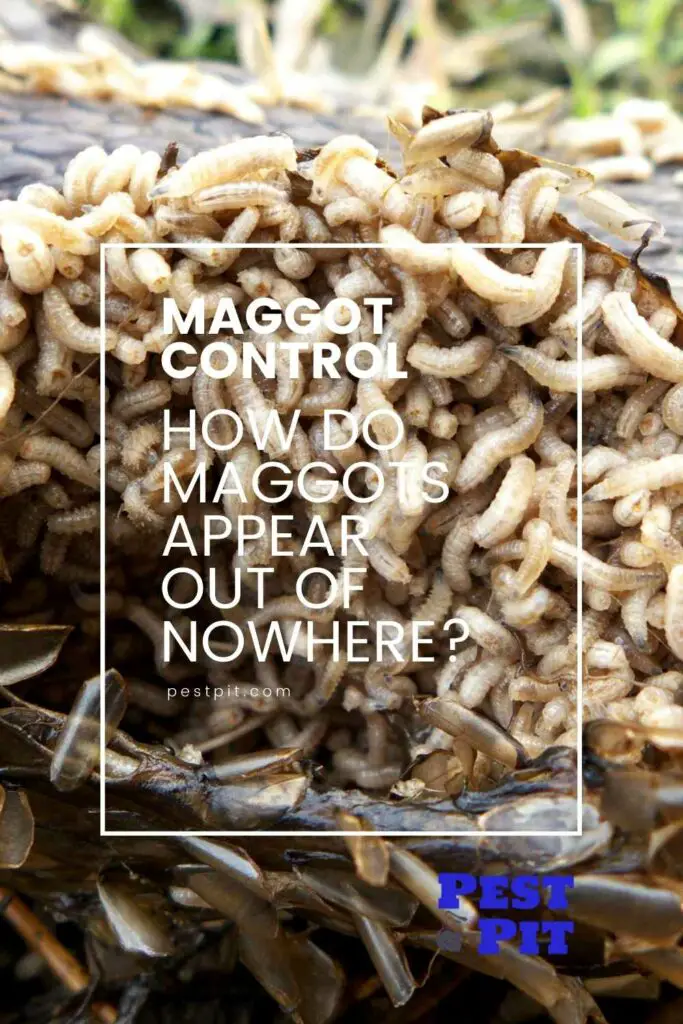
Maggot formation.
Maggots do not just appear from nowhere; they are indeed baby flies (that is, fly larvae). However, it is not the larva of all flies that take the form of maggots.
Maggot formation is peculiar to Brachycera flies. Brachycera is a subgroup under the general biological group (order) of flies – Diptera. Examples of Brachycera flies are cheese flies and house flies.
Now to answer the question, how do maggots form?
Breeding ground.
Flies lay their eggs in places with a good food source for their offspring. Corpses, garbage, feces, and other things that maggots can easily feed off. These are examples of food sources where maggots thrive.
No wonder maggots are synonymous with filth, bad things, and carcasses! After all, all of these will make a good food source for the maggots.
Life Cycle.
The life cycle of flies is a simple one. The life cycle of flies is in three stages (or four, including the egg stage). The larva stage (after hatching from the eggs), the pupa stage, and the adult fly stage. Although the lifespan of flies is relatively short (typically between 15 – 30 days), they are profuse breeders.
A female fly can lay as many as 500 eggs over just 3 days! No wonder we can’t get rid of flies.
Hatching eggs.
The fly eggs are usually about the same size as a grain of rice. They are mostly white and require only a day (or sometimes less) to hatch. The time it takes to hatch depends on the temperature of the ”breeding ground”.’
Flies are pregnant for 24 hours, and the eggs hatch after another 24 hours. Immediately after the eggs hatch, the maggots emerge. The maggots are without legs. Hence, they cannot crawl too far distances.
Maggots look very much like worms. There are other bugs that look like maggots too.
Maggots feeding.
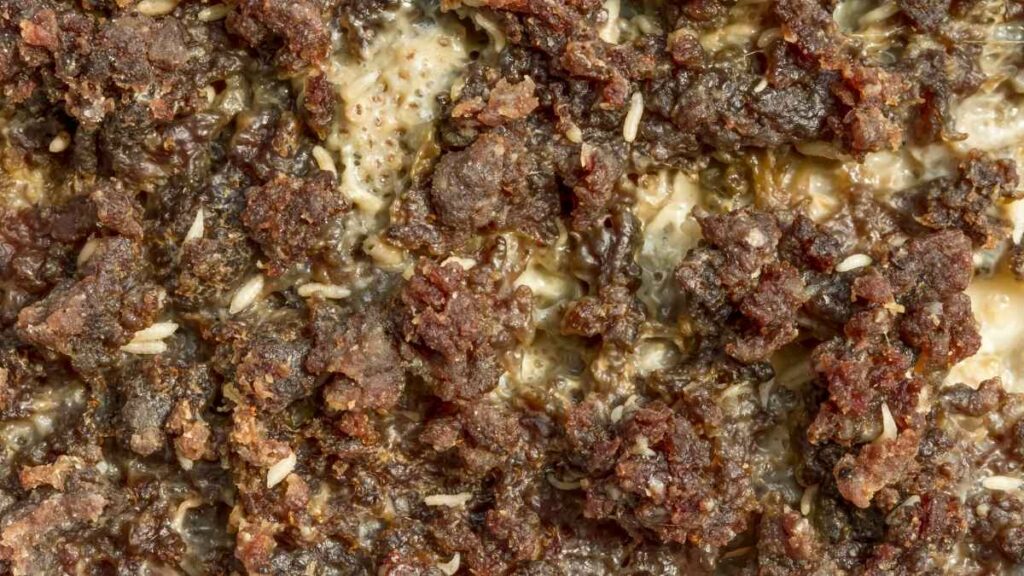
The maggots feed on the food source upon which the fly laid its eggs. Although maggots have no teeth with which they can chew, their rough skin, mouths, and enzymes aid their feeding.
For instance, if flies place eggs on a carcass, the maggots’ tough skin slowly scrapes the skin of the dead creature. Furthermore, they secrete enzymes that liquefy the dead tissues upon which they eventually feed.
Molting
The maggots keep feeding and growing bigger. Once they have consumed enough and they have enough energy for the pupation, the maggots then move to a darker place.
It is in this dark place that the molting takes place. The maggots change color from white to either red, brown, yellow, or black. During molting, the maggots shed their outer coats and grow new ones.
Growing into adult flies.
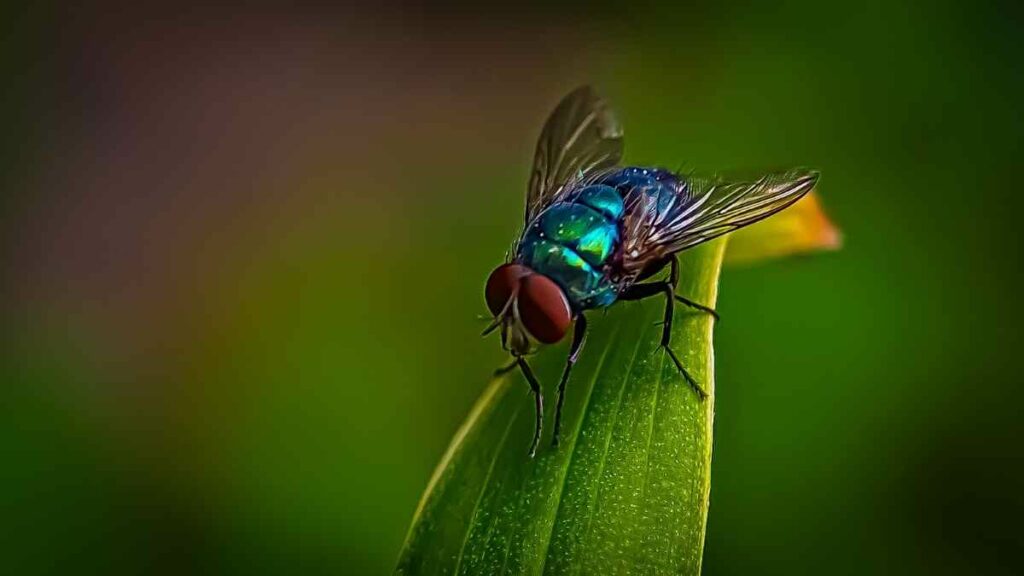
The pupa can now grow wings and become an adult fly. The metamorphosis from eggs to adult flies takes about seven to ten days. However, it can take a more extended period if the temperature is not favorable.
The adult fly can begin to lay eggs two days after completing its metamorphosis, and the processes take place all over.
Can maggots harm you?
Maggots are not only irritating, but they are also dangerous to your health. Some carry bacteria that can transmit diseases to humans and pets alike. Although maggots do not possess fangs/venoms that you should beware of, they can make you sick.
The list of diseases caused by maggots infestation are;
Myiasis
Myiasis is an infection that occurs when maggots get into the human body. Although it seems far-fetched to think a person will eat maggots, it happens accidentally. After the flies lay eggs on uncovered food, the person can take in the eggs while consuming the food.
The ingestion of fly eggs can lead to maggot infestation in the body. Inside the body, the maggots begin to feed on the body tissues causing terrible damage to the body. Maggot infestation also causes myiasis in animals as well.
Deafness, blindness, or Anosmia.
If the maggots enter the body through the ear, they can cause such a person to become deaf. However, it may not become evident until the ear starts bleeding.
Maggots infestation through the nose can cause Anosmia in the host. Anosmia is the inability to smell things (that is, perceive odor). The nose may also begin to bleed as well.
When maggots infest the body, unwanted diseases can develop in the body. Some other infections that maggots can cause are; skin infections, allergic reactions, stomach aches, food poisoning, random body pains, facial edema, etc.
Tips for getting rid of maggots.
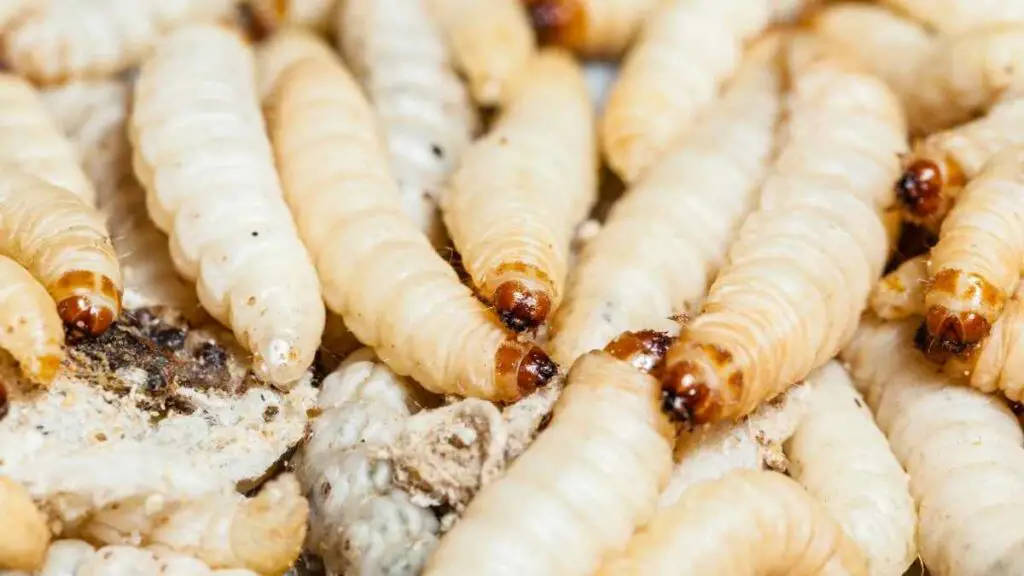
There are several ways to deal with maggot infestations. Are you seeking ways to rid of maggots either in your yard, garbage bins, or even in your house? Look no further.
Some of the most effective, natural ways of handling maggot infestation are listed below;
Boiling water
Boil a pot/kettle of water and pour it down the sink or in the trash can or the yard. Just make sure the water is hot. Then pour it into where the fly larvae are.
You might need to repeat this process several times to kill them all. This process is easy to carry out, and it is effective in getting rid of the maggots. However, it does not prevent the flies from returning.
Vinegar

You do not like the idea of boiling water to kill maggots? Then, use vinegar. A mixture of vinegar and water (three parts water to one part vinegar) creates an acidic environment for the maggots. Pour the mixture directly upon the maggots.
The maggots cannot survive such conditions. This method has an advantage over the use of boiling water. The smell of vinegar temporarily keeps the flies from returning. You would need to repeat the process weekly to keep the flies away – permanently.
Salt kill
Maggots thrive in the presence of water. Table salt is a natural dehydrator. In this case, all that you need to do is pour a large amount of table salt on the maggots.
The salt dries the environment, and the maggots die naturally. You can remove the maggots and wash/disinfect the infected area thoroughly.
Preventing maggot infestation in the future
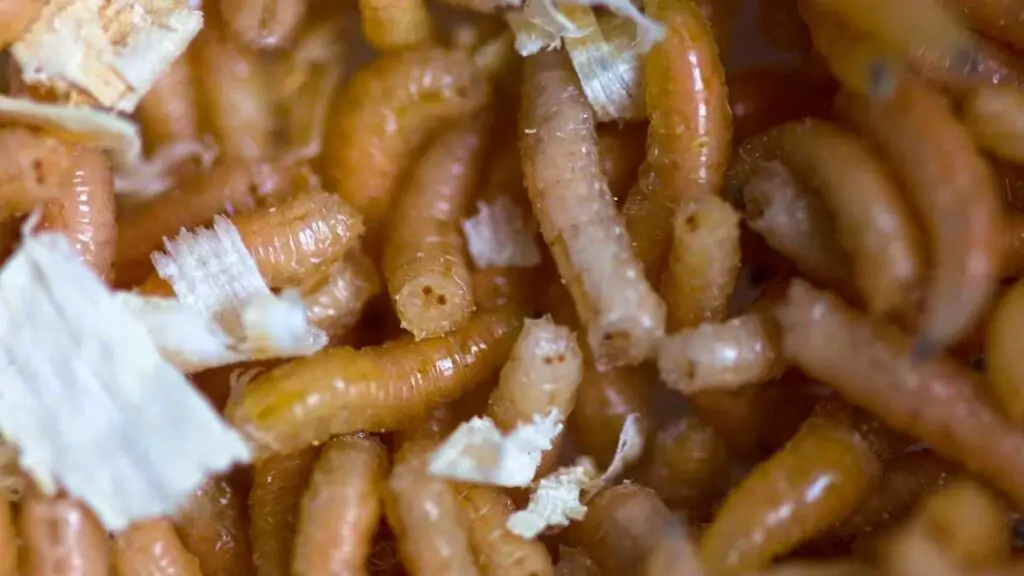
After getting rid of the maggots, you want to be sure that flies will not be back to lay eggs around any time soon. You cannot get rid of flies completely. But you can reduce them to the barest minimum. What measures can you take to prevent the future infestation of maggots?
Remove anything that can serve as a breeding ground for flies. That includes feces, carcasses, and spoiled food. Ensure you keep the lid of your trash can closed.
You can also use natural fly repellents to deter flies from laying eggs around you. Finally, keep your house, kitchen, and yard clean always.
There can be no maggots if the flies have not laid eggs.
So, keep the flies from laying eggs around you. And it will be a while before you see maggots.

